Do you love meringue? If so, then you’ll love my recipe for vegan meringues. These cookies are the perfect combination of crispy and chewy with a light sweetness that will make your mouth water. You won’t believe they are vegan!
Vegan Meringue Cookies
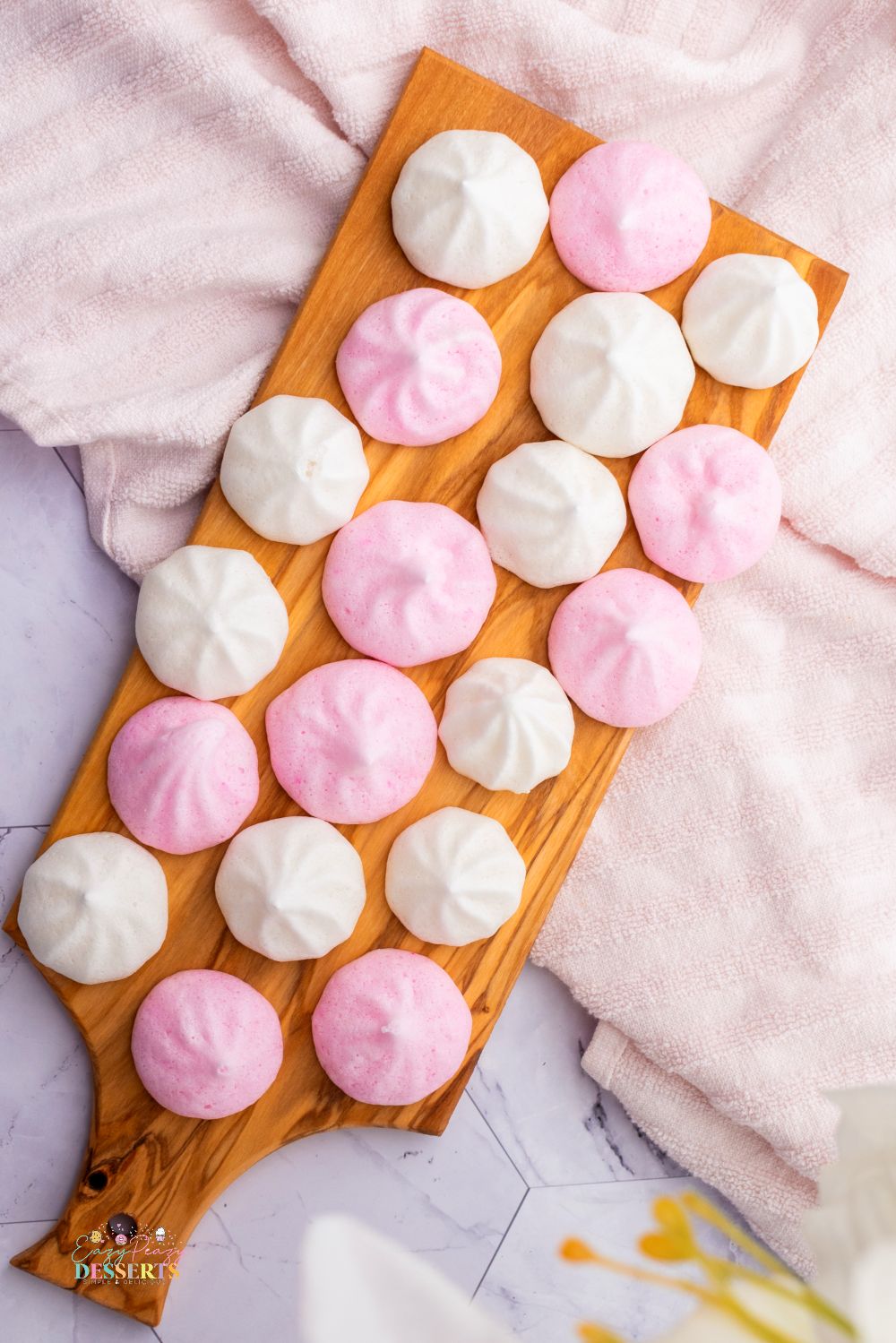
Meringue cookies are a simple treat to enjoy on any occasion. But if you’re vegan, using a traditional cookie recipe is out of the question. Luckily, there’s a simple substitution you can use to make your own vegan meringues at home. This three ingredient recipe is the perfect vegetarian treat to prepare for any holiday celebration.
My recipe is easy to follow and only requires 3 ingredients (4 if you add food coloring)! Once you have them all in hand, it takes less than 10 minutes to whip up these delicious lemon meringue cookies. I can tell you from experience that they taste just as good as any other kind of meringue cookie out there – maybe even better because they don’t contain any animal products or by-products. These aquafaba meringue cookies aren’t just for vegans either; everyone will enjoy these tasty treats!
Other vegan desserts you will love:

Is Meringue Vegan?
Traditional meringue is made by beating egg whites until they’re shiny and foamy. And since egg whites aren’t part of the vegan diet, traditional meringue is not vegan. But there’s no reason you have to skip out on making your meringue at home if you’re on a vegan diet. With a simple substitution, you can prepare vegan meringue without the need for eggs at all.
To make vegan meringue, you have to replace the eggs in the classic recipe with aquafaba. The chickpea liquid is the perfect substitute for egg whites in this easy vegan meringue recipe!
What is in Vegan Meringues?
Since traditional meringue isn’t vegan, finding a good egg-free recipe is a must. So, if you’re hoping to make a vegan alternative to classic meringue, you’re probably wondering what ingredients you’ll need. This recipe is made with just three vegetarian ingredients:
- Aquafaba
- Sugar
- Lemon juice
In addition to these ingredients, you can also add food coloring to your meringue to create different colored cookies.
What does vegan meringues taste like?
Vegan meringues taste just like the real thing. Since they’re made egg-free, there’s no strange aftertaste or chemical flavor to worry about. They’re sweet and soft on the inside, but crispy on the outside. And of course, they can be topped with whatever you like!
What does vegan meringue look like?
Vegan meringue has the same appearance as traditional meringue. This vegan substitute for meringue is just as light and fluffy as its egg-based counterpart. It has a smooth exterior and a depth of color that looks just as good as any other kind of meringue cookie.
Is vegan meringue healthy?
Vegan meringue cookies are not only simple to make, but they’re also a healthier alternative to other desserts! The three main ingredients found in this recipe all contribute healthy benefits to any diet.
Aquafaba is a great source of protein and vitamin B12, which makes it a nutritional powerhouse. Sugar is mostly empty calories, but this entire recipe calls for just 1/2 a cup of sugar. And lastly, lemon juice provides a dose of vitamin C to boost your immune system. So if you’re looking for a way to enjoy meringue that won’t destroy your healthy eating habits, this is it!
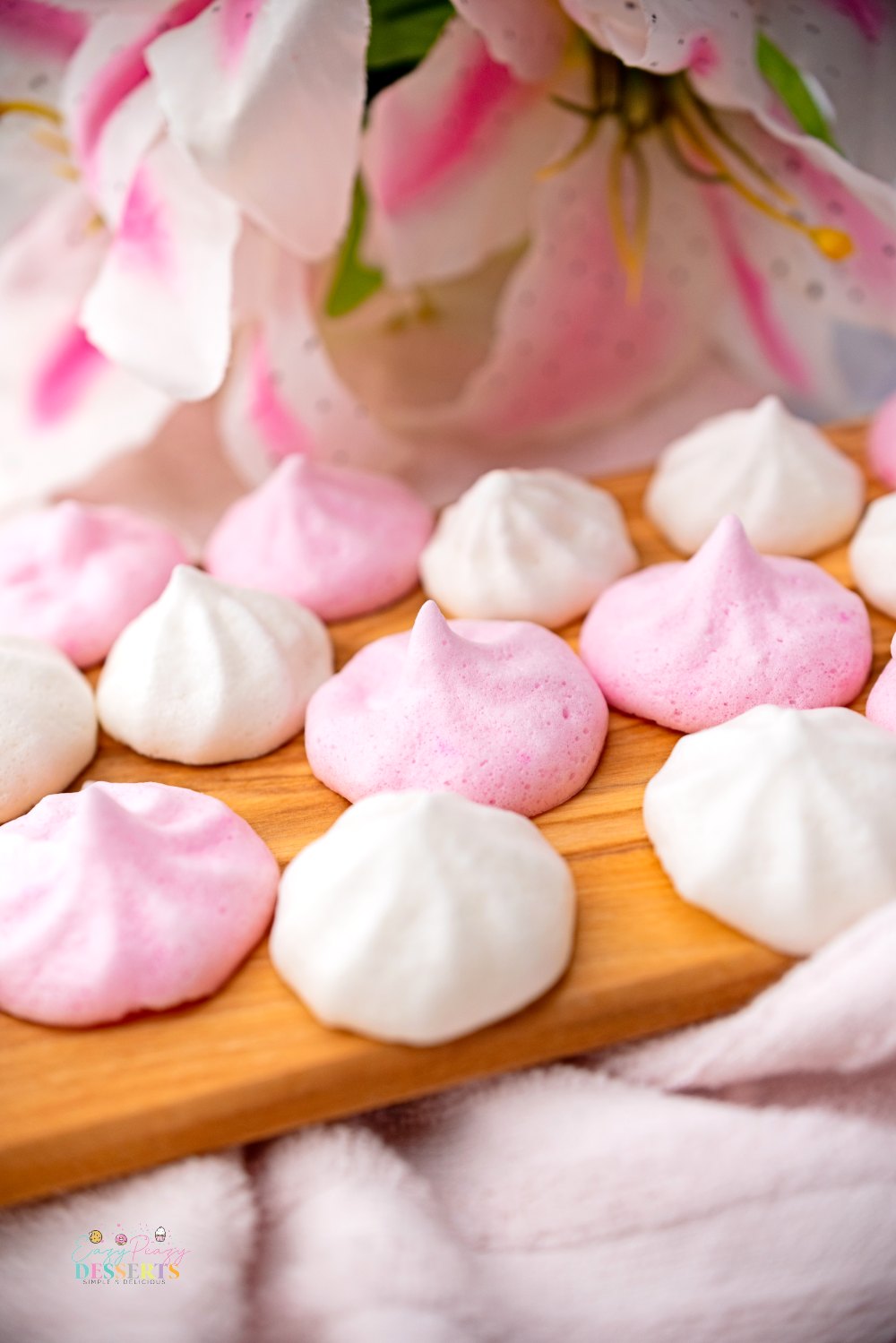
What is Aquafaba?
Aquafaba is used in place of egg whites in this vegan meringue recipe. But if you’ve never heard of this ingredient before, you’re probably wondering what is aquafaba? Simply put, aquafaba is the liquid leftover after you’re finished cooking chickpeas.
You can make aquafaba in two different ways:
- Drain a can of chickpeas and reserve the liquid for your recipe
- Cook your own chickpeas and reserve the leftover cooking liquid
This handy ingredient can be used in a variety of recipes as a replacement to egg whites, allowing you to transform traditional recipes into vegan treats with ease. You can use aquafaba in place of egg whites in recipes like:
- Vegan waffles
- Macaroons
- Vegan mayonnaise
- Cookies
- Pancakes
- Meringue frosting
How to Make Aquafaba
Since aquafaba is a found ingredient, it can be difficult to know exactly how much liquid you’ll get from a pot or can of chickpeas. That’s why it’s important to take a few simple steps to ensure you get all of that precious liquid from your chickpeas to use in your favorite baked goods.
Whether you’re using aquafaba from a can of chickpeas or boiling the chickpeas yourself, follow these simple steps to help make extracting the liquid from the beans a little easier:
- Shake the can before opening. Since the ingredients inside your chickpea can are likely to settle as the can is resting on the shelf, it’s a good idea to start by shaking the can a few times to stir up the ingredients inside.
- Use a fine mesh strainer. To help separate the chickpeas from the liquid, place a fine mesh strainer over the top of a bowl. Pour the can of chickpeas into the strainer and allow the liquid to flow through the strainer into the bowl. Allow the chickpeas to rest in the strainer for a couple of minutes to give the liquid time to drip off, then lightly tap the strainer on the side of the bowl to knock off the extra liquid.
- Set the beans aside. Since this recipe only uses the liquid from the chickpeas, you can set the beans aside to be used in another recipe. Store your chickpeas in an airtight container in the refrigerator until you’re ready to use them.
How Much Aquafaba Can You Get from One Can?
One 15-ounce can of chickpeas will give you around ¾ cup of aquafaba. That’s enough to make one batch of these vegan meringue cookies. If you have extra aquafaba leftover from your can, you can store it in an airtight container in the refrigerator for up to one week or place it in the freezer for up to three months.
Vegan Meringue Recipe Tips
Since this recipe is made with just three ingredients, it’s very simple to prepare. And with these recipe tips, you’ll be able to whip up your own aquafaba cookies with ease.
- Add cream of tartar to stabilize the aquafaba. While using cream of tartar isn’t necessary to prepare this recipe, it is a helpful addition if your aquafaba isn’t setting up properly. After beating the liquid on high for around 10 minutes, it should become fluffy and slightly stiff. But if your aquafaba doesn’t have a similar consistency to whipped cream at that point, you may need to add cream of tartar to help it along. A small amount (around ¼ teaspoon) is all you need to help stabilize the liquid.
- Use gel food coloring. Since meringue is often temperamental, it’s important to use the correct type of food coloring in this recipe. To keep your meringue from getting too wet, gel food coloring is the best choice. Liquid food coloring may add too much water to the aquafaba, which could prevent it from becoming stiff as you whip the ingredients together.

Why did my vegan meringues collapse?
If your vegan meringue has collapsed, there are a few different reasons you might be experiencing this issue.
- Your aquafaba wasn’t beaten long enough. Since it can take up to 10 minutes for aquafaba to reach the right consistency, make sure you give the mixture plenty of time before adding your other ingredients. The aquafaba should be white and fluffy with stiff peaks before you add the sugar.
- You added too much sugar at once. Adding all of your sugar in one go can cause the liquid to lose some of its airiness, which prevents it from holding up when cooking or piping onto a baking sheet. Be sure to beat the meringue for about 10 minutes before adding your sugar so it can hold its shape as you add ingredients.
- Your oven temperature was too hot. If you’re baking at a higher than normal oven temperature, such as 350°F, this can cause your meringue cookies to cook more quickly than they should. Since the high temperature can cause some of the aquafaba to collapse, baking at a lower temperature is recommended.
- Your meringue cookies were left in the oven too long. While it’s best to bake these meringue cookies until they have set and have a nice brown color, baking them for too long can cause the meringues to collapse.
How long will vegan meringue last?
If you’re making your vegan meringue cookies in advance, they will last for up to three days when stored in an airtight container at room temperature. But if you want to avoid having soggy meringues, it’s best to serve these aquafaba cookies as soon as they have cooled down from the oven.
How to store vegan meringues?
Since these vegan meringue cookies are made with just three ingredients, they have a very short shelf life. Because of this, it’s best to serve them either immediately or store them in an airtight container at room temperature for up to three days.
Can you freeze vegan meringue cookies?
Since vegan meringue cookies are made with just three ingredients and no eggs, they don’t freeze very well. Storing them in an airtight container for up to three days is the best way to prevent your meringues from getting soggy. And since this recipe makes about 20 meringue cookies, it shouldn’t be hard to eat them before they go bad.
Now that you know how to make vegan meringue, these cookies should be a breeze to whip up. I hope you enjoy these vegan meringue cookies! If you have any other questions about the recipe, please feel free to leave a comment below. And don’t forget to share this recipe with your friends so they can enjoy vegan meringue cookies, too!
Pin to save for later
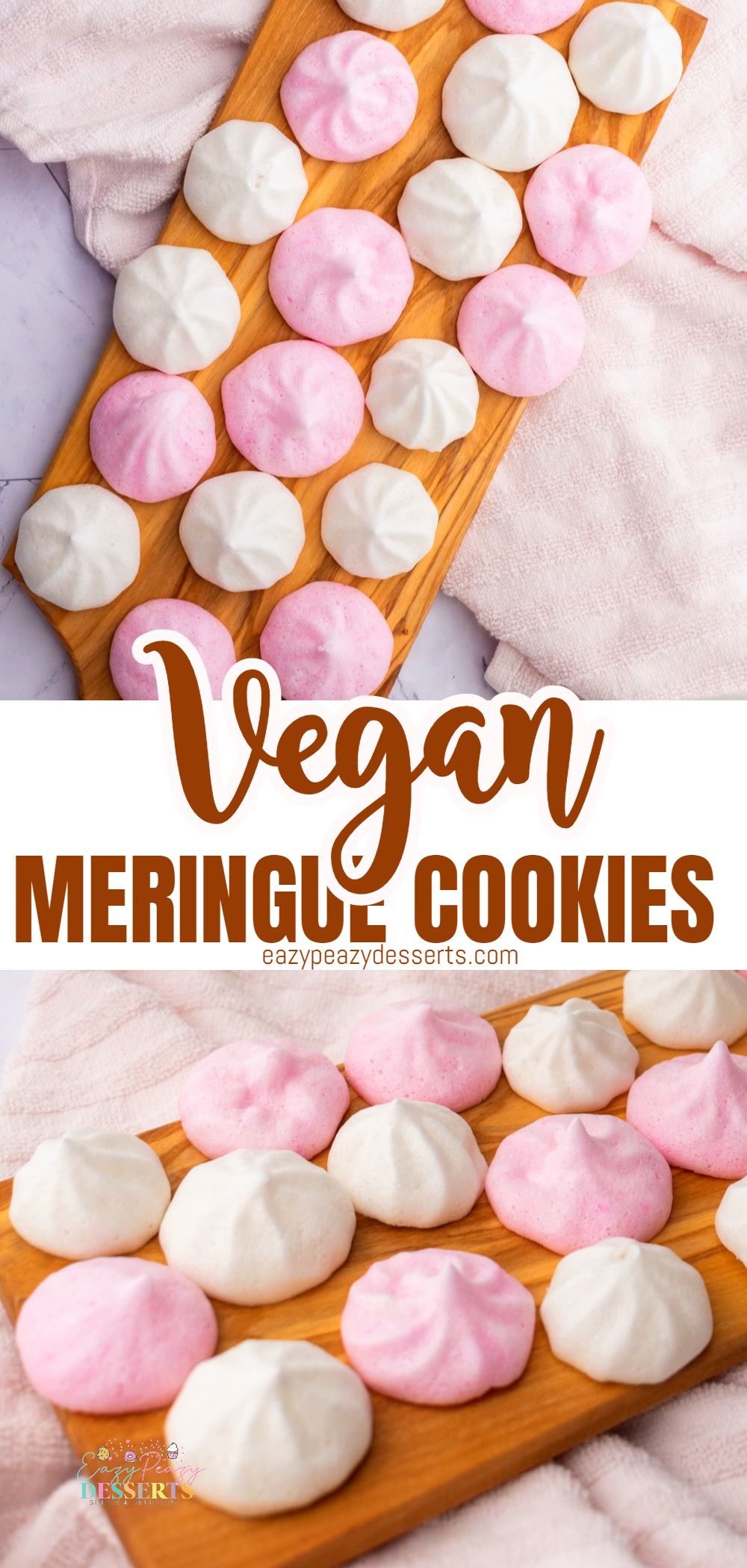
Print the recipe card
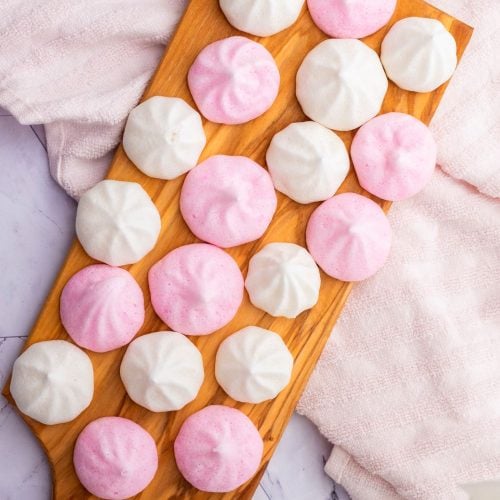
Vegan meringue cookies
Ingredients
- 1 can chickpeas aquafaba only
- ½ cup sugar
- 1/2 lemon juice only
- Food coloring optional
Instructions
- Preheat your oven to 200 degrees Fahrenheit. Prepare two baking sheets with parchment paper. Start by draining the juice from your can of chickpeas. All liquid should be collected and saved. I was able to save a little over ¾ cup.

- Add the aquafaba and the juice of half a lemon to your mixer and mix for about 10 minutes on high. It should expand and get stiff, almost like whipped cream.

- Slowly add your sugar while the mixer is spinning.

- Put the whipped aquafaba in a piping bag and create small dollops, no larger than a quarter, to your baking sheet. Make sure to give them a little bit of space, because they will expand a little bit.

- Add to the oven 90 minutes or until your meringue is completely dry. It may be longer or shorter, depending on the size of your meringue. Just make sure to keep an eye on it, and don’t let it get too dry.

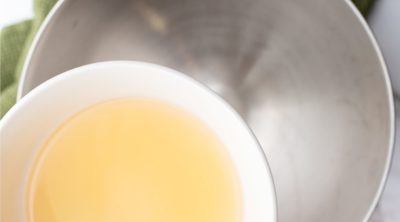
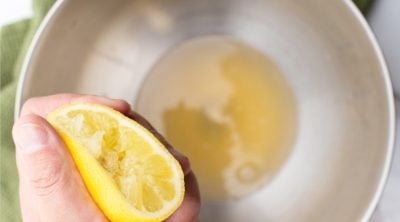
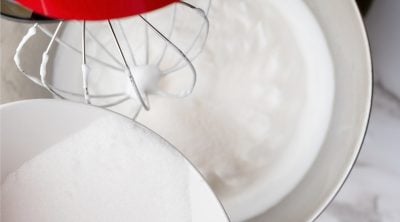
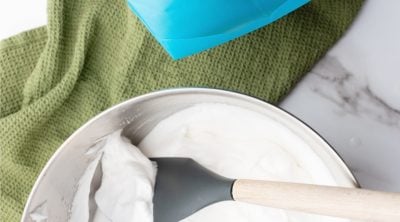
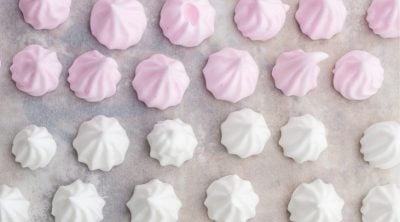





Leave a Reply